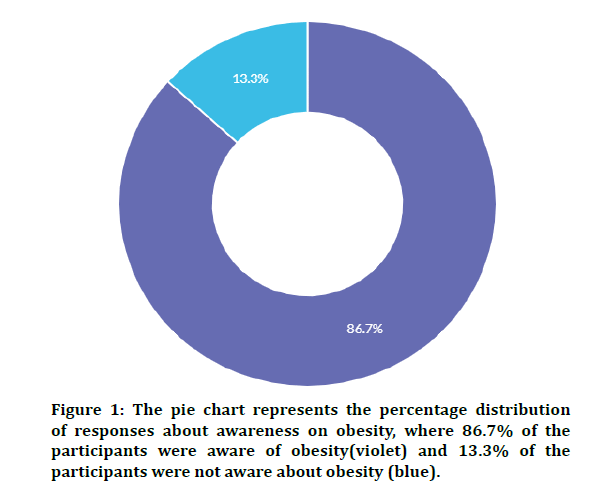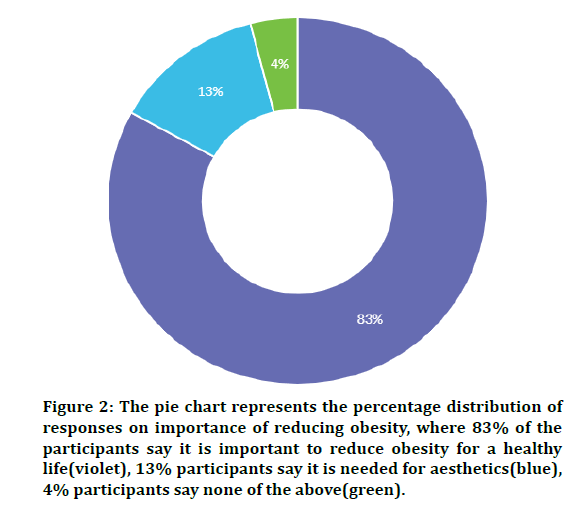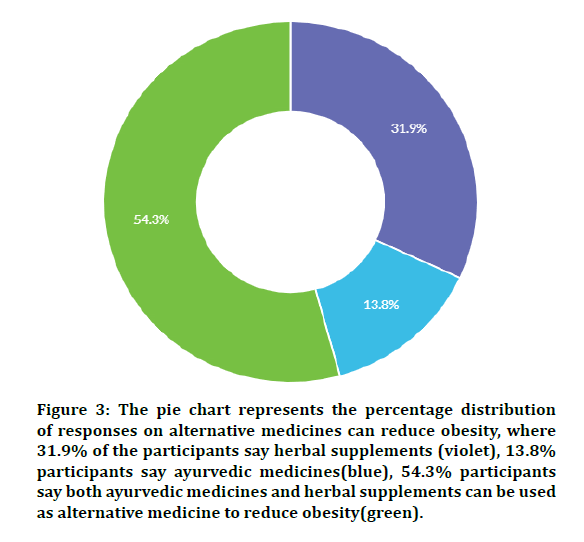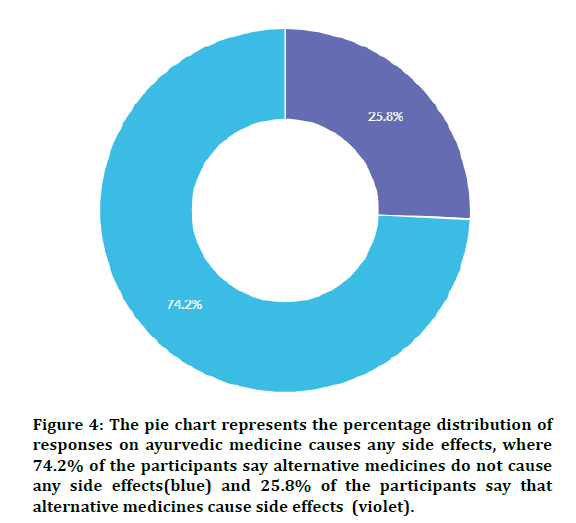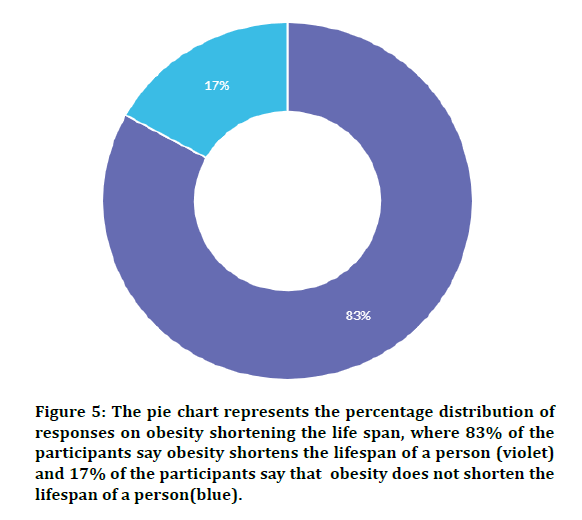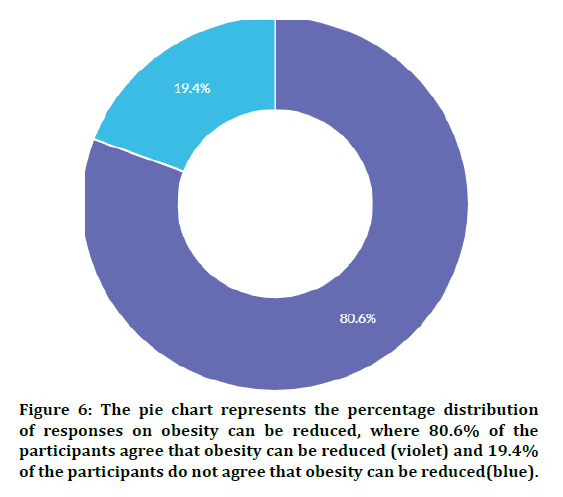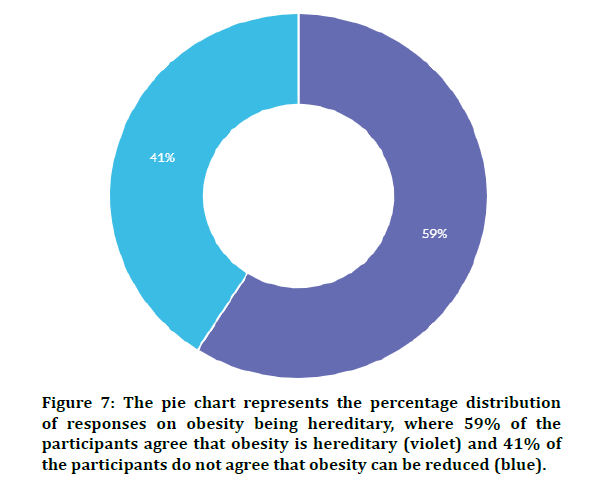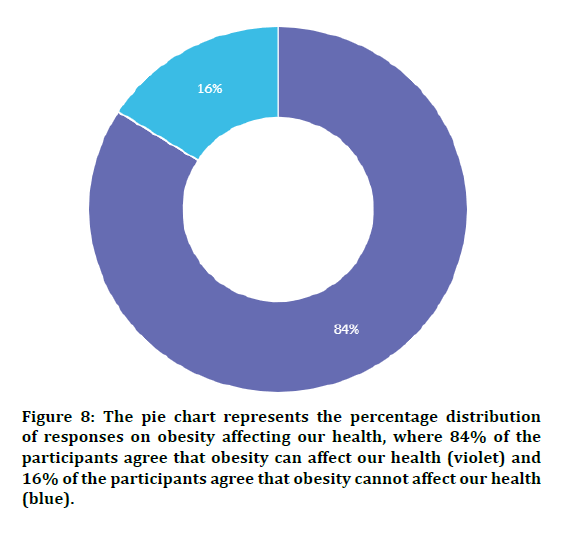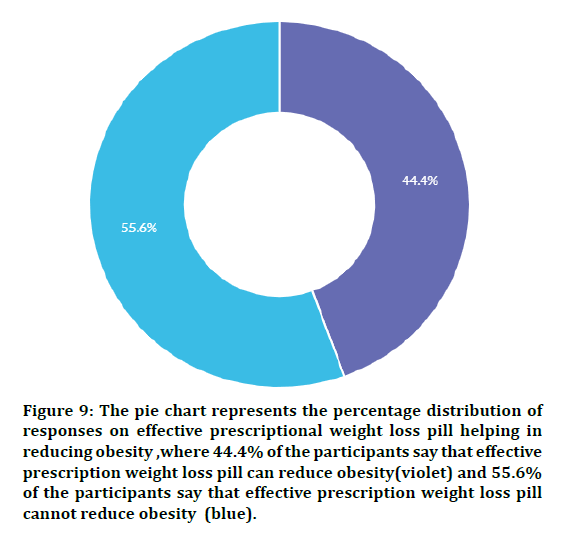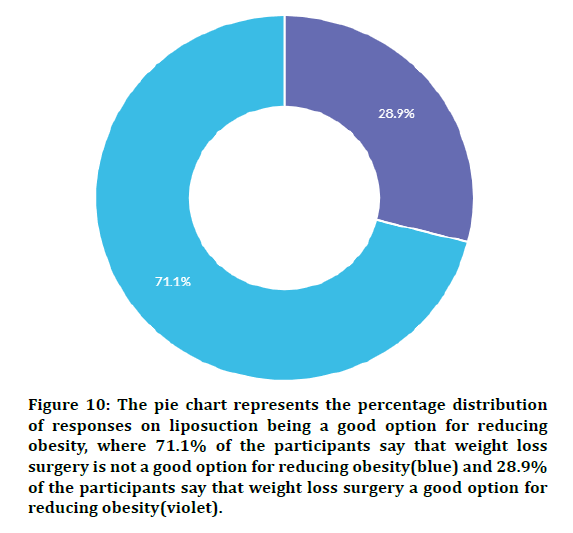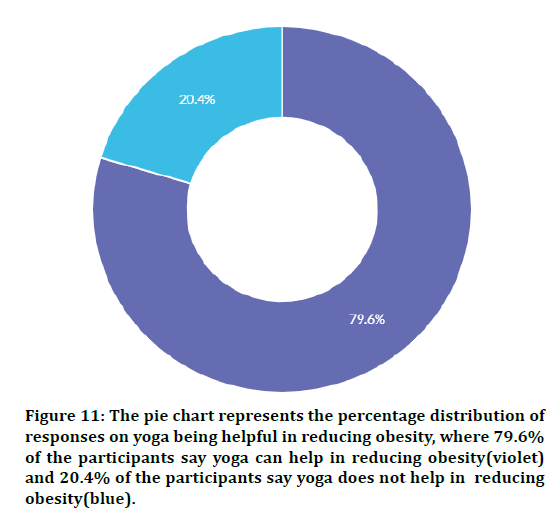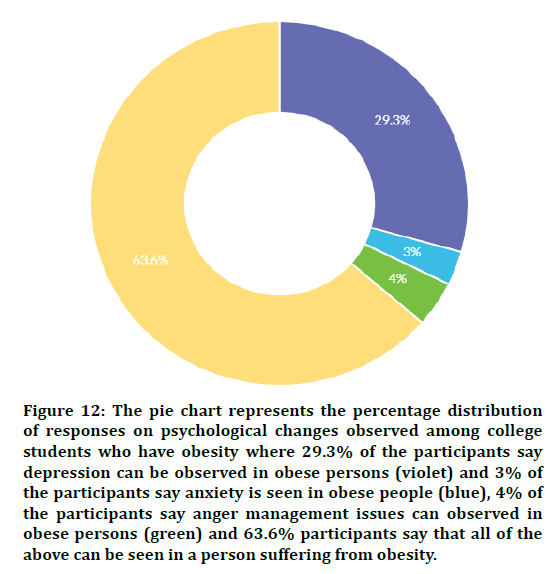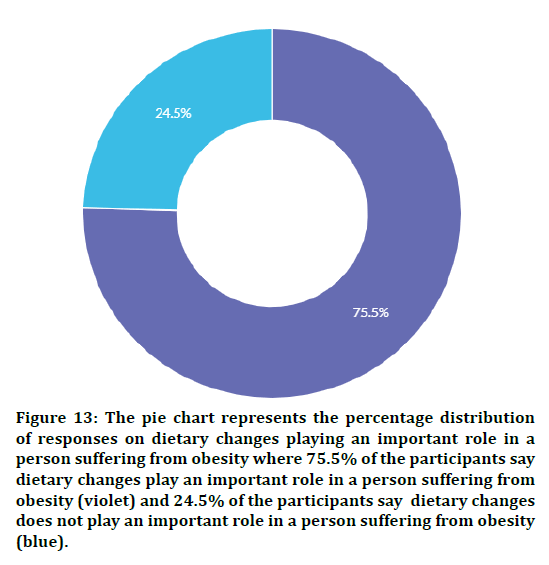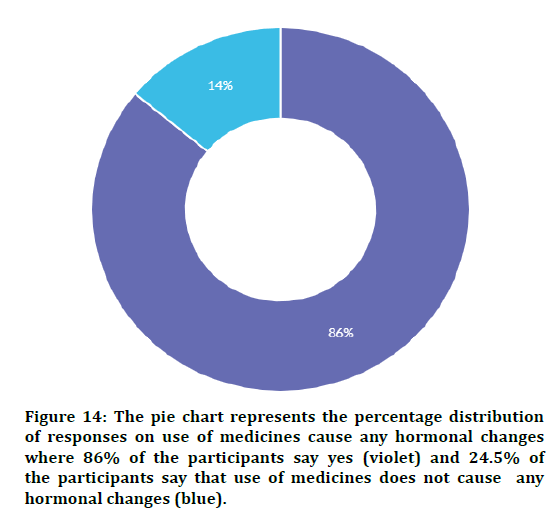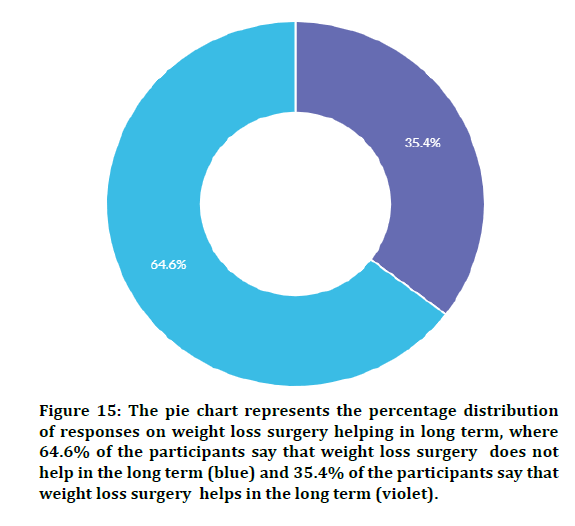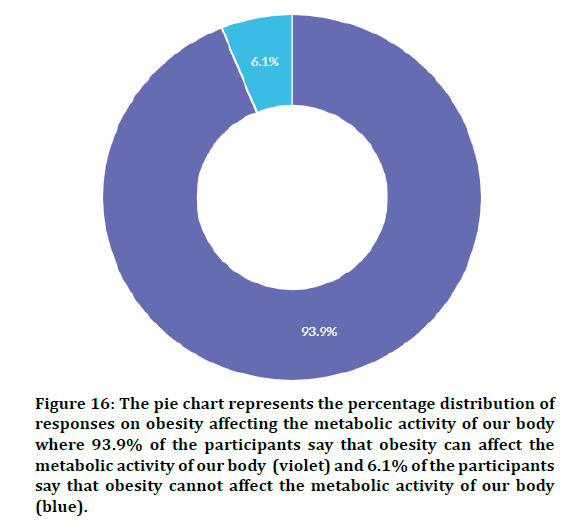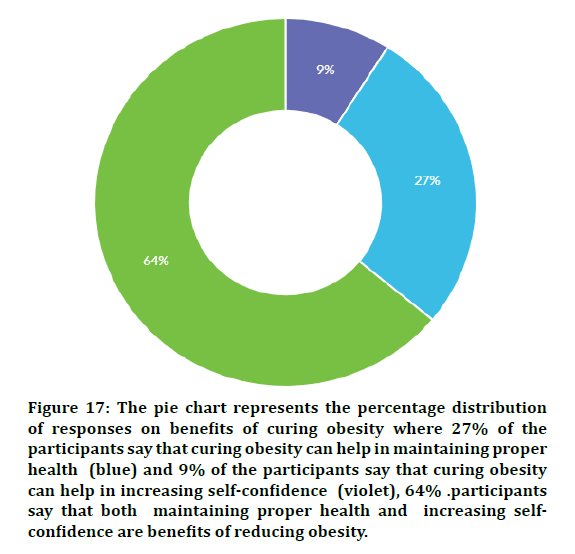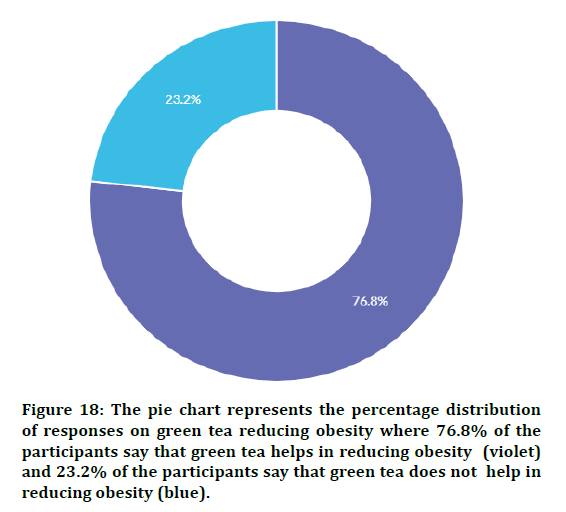Research - (2020) Advances in Dental Surgery
Awareness on Weight Loss with Alternative Medicines Among College Students
Sai Keerthana MB, Vishnu Priya V* and Gayatri R
*Correspondence: Vishnu Priya V, Department of Biochemistry, Saveetha Dental College, Saveetha Institute of Medical and Technical Sciences (SIMATS), Saveetha University Tamilnadu, Chennai, India, Email:
Abstract
Obesity is a medical condition in which excess body fat gets accumulated to an extent that it might have a negative effect on health. It is a chronic disease that can lead to high blood pressure, cardiovascular disease, diabetes and can also be a risk factor for several cancers. It can be prevented from an incredibly young age. Eating healthy foods, limiting unhealthy foods, consuming less processed and sugary foods, consuming more fruits and vegetables can be brought about from a young age so it can become a practice. Obesity is a treatable disease that is caused by genetic and environmental factors and it is difficult to control through dieting alone. The aim of the study is to create awareness on weight loss with alternative medicines among college students. This was a survey-based study wherein a questionnaire was prepared and was circulated among the students through an online platform called survey planet. The results from the study showed that most of the students were aware about obesity and have knowledge on alternative medicines that can be used to reduce obesity. Health education camps, seminars, workshops on the risk factors of obesity may be conducted to create awareness among the community.
Keywords
Obesity, Excessive fat, Alternative medicines, Survey planet, Online survey
Introduction
Obesity is a common disease of public health importance. It is defined as a condition in which excessive fat accumulates in the adipose tissue [1]. The main causes of obesity are genetics, nutrition, and physical activity. Consumption of soft drinks is also an indicator for obesity in most of the children [2]. Obesity can be prevented by means of physical exercise during everyday life; leisure time promotes weight loss and improves obesity-associated diseases. Behavior modification can support changes in nutrition and exercise in everyday life [3]. As obesity is becoming one of the dangerous disorders and there is some fault or failure of the western medicine to meet its standard, the potential role of Herbal Medicines in the treatment of obesity is into play now [4].
There has been a new sensational use of complementary and alternative medicine (CAM) schemes despite having available diet plans and proper exercise plans for losing and maintaining weight [5]. There are some modern and unique strategies in overcoming obesity that are done mainly to control the lifestyle of a person by modulating the diet and exercises and the usage of anti-obesity medications [6]. Alternative medicines that are using therapies which are used in place of old traditional medicines [7]. Udartara therapy which is an ayurvedic body massage done using a dry herbal powder with medicated oil is the most common ayurvedic treatment to cure obesity [8].
The use of phytochemical constituents and action of natural anti-obesity agents is in use now [9]. Treatments of obesity or reducing obesity using various alternative medicines include the use of both ayurvedic and herbal medicine together. Previous studies on cancer biology, nano materials, herbal products [10-15] have motivated me to pursue this current research which is useful to our community. The aim of the study is to create awareness on weight loss with alternative medicines among college students.
Materials and Methods
A self-administered questionnaire was prepared regarding the awareness of weight loss using alternative medicines. The questionnaire consisted of around 18 questions. The sample size of the study was 100. The survey was circulated among the college students of age group 18 to 25 years through an online survey planet link. The questions were studied carefully, and the corresponding answers were marked by the participants. The data was collected and statistically analysed. The output variables were represented as pie charts.
Results and Discussion
86.7% said they were aware of obesity and 13.3% said they were unaware of obesity (Figure 1). 83% of students agreed that it is important to decrease obesity for a healthy life, 13% agreed that it was needed for aesthetic appearance and 4% disagreed with the above facts (Figure 2). 31.9% students said that herbal supplements were used as alternative medicine to reduce obesity, 13.8% said Ayurvedic medicines, 54.3% students said all of the above (Figure 3). 25.8% students felt that ayurvedic medicines caused side effects, 74.2% felt that it does not cause any side effects (Figure 4). 83% students agreed that obesity shortens the lifespan of a person, 17% disagreed (Figure 5).
Figure 1: The pie chart represents the percentage distribution of responses about awareness on obesity, where 86.7% of the participants were aware of obesity(violet) and 13.3% of the participants were not aware about obesity (blue).
Figure 2: The pie chart represents the percentage distribution of responses on importance of reducing obesity, where 83% of the participants say it is important to reduce obesity for a healthy life(violet), 13% participants say it is needed for aesthetics(blue), 4% participants say none of the above(green).
Figure 3: The pie chart represents the percentage distribution of responses on alternative medicines can reduce obesity, where 31.9% of the participants say herbal supplements (violet), 13.8% participants say ayurvedic medicines(blue), 54.3% participants say both ayurvedic medicines and herbal supplements can be used as alternative medicine to reduce obesity(green).
Figure 4: The pie chart represents the percentage distribution of responses on ayurvedic medicine causes any side effects, where 74.2% of the participants say alternative medicines do not cause any side effects(blue) and 25.8% of the participants say that alternative medicines cause side effects (violet).
Figure 5: The pie chart represents the percentage distribution of responses on obesity shortening the life span, where 83% of the participants say obesity shortens the lifespan of a person (violet) and 17% of the participants say that obesity does not shorten the lifespan of a person(blue).
80.6% students agreed that obesity can be reduced, 19.4% disagreed (Figure 6). 59% students said that obesity was hereditary and 41% said that obesity was not hereditary (Figure 7). 84% of students felt that obesity affected our health and 16% felt that it does not affect our health (Figure 8). 44.4% students said that weight loss pills help in reducing obesity and 55.6% say it does not help in reducing obesity (Figure 9). 28.9% students agreed that liposuction is a good option for reducing obesity and 71.1% said it was not a good option (Figure 10). 79.6% students felt that yoga helped in reducing obesity and 20.4% felt that it does not help in reducing obesity (Figure 11).
Figure 6: The pie chart represents the percentage distribution of responses on obesity can be reduced, where 80.6% of the participants agree that obesity can be reduced (violet) and 19.4% of the participants do not agree that obesity can be reduced(blue).
Figure 7: The pie chart represents the percentage distribution of responses on obesity being hereditary, where 59% of the participants agree that obesity is hereditary (violet) and 41% of the participants do not agree that obesity can be reduced (blue).
Figure 8: The pie chart represents the percentage distribution of responses on obesity affecting our health, where 84% of the participants agree that obesity can affect our health (violet) and 16% of the participants agree that obesity cannot affect our health (blue).
Figure 9: The pie chart represents the percentage distribution of responses on effective prescriptional weight loss pill helping in reducing obesity ,where 44.4% of the participants say that effective prescription weight loss pill can reduce obesity(violet) and 55.6% of the participants say that effective prescription weight loss pill cannot reduce obesity (blue).
Figure 10: The pie chart represents the percentage distribution of responses on liposuction being a good option for reducing obesity, where 71.1% of the participants say that weight loss surgery is not a good option for reducing obesity(blue) and 28.9% of the participants say that weight loss surgery a good option for reducing obesity(violet).
Figure 11: The pie chart represents the percentage distribution of responses on yoga being helpful in reducing obesity, where 79.6% of the participants say yoga can help in reducing obesity(violet) and 20.4% of the participants say yoga does not help in reducing obesity(blue).
29.3% of students believed that depression can be observed among college students who were obese and 3% believed that anxiety was observed among the students who were obese, 4% students suffered from anger issues due to obesity and 63.6% students agreed to all the above mentioned conditions (Figure 12). 75.5% of students said that dietary changes played an important role in a person suffering from obesity and 24.5% said that it does not play an important role in a person suffering obesity (Figure 13). 86% of students agreed that use of medicines can cause hormonal changes and 14% disagreed (Figure 14). 35.4% of students said that liposuction helped in the long term and 64.4% said that it does not help in the long term (Figure 15). 93.9% of students agreed that obesity affects the metabolic activity of the body and 6.1% said that it does not affect metabolic activity (Figure 16). 9% of students believed that weight loss increased self-confidence, 27% students believed that weight loss helped to maintain proper health and 64% believed that all the weight loss increased self-confidence and maintained proper health above (Figure 17). 23.2% said that green tea helped in reducing obesity whereas 76.8% said that it does not help in reducing obesity (Figure 18).
Figure 12: The pie chart represents the percentage distribution of responses on psychological changes observed among college students who have obesity where 29.3% of the participants say depression can be observed in obese persons (violet) and 3% of the participants say anxiety is seen in obese people (blue), 4% of the participants say anger management issues can observed in obese persons (green) and 63.6% participants say that all of the above can be seen in a person suffering from obesity.
Figure 13: The pie chart represents the percentage distribution of responses on dietary changes playing an important role in a person suffering from obesity where 75.5% of the participants say dietary changes play an important role in a person suffering from obesity (violet) and 24.5% of the participants say dietary changes does not play an important role in a person suffering from obesity (blue).
Figure 14: The pie chart represents the percentage distribution of responses on use of medicines cause any hormonal changes where 86% of the participants say yes (violet) and 24.5% of the participants say that use of medicines does not cause any hormonal changes (blue).
Figure 15: The pie chart represents the percentage distribution of responses on weight loss surgery helping in long term, where 64.6% of the participants say that weight loss surgery does not help in the long term (blue) and 35.4% of the participants say that weight loss surgery helps in the long term (violet).
Figure 16: The pie chart represents the percentage distribution of responses on obesity affecting the metabolic activity of our body where 93.9% of the participants say that obesity can affect the metabolic activity of our body (violet) and 6.1% of the participants say that obesity cannot affect the metabolic activity of our body (blue).
Figure 17: The pie chart represents the percentage distribution of responses on benefits of curing obesity where 27% of the participants say that curing obesity can help in maintaining proper health (blue) and 9% of the participants say that curing obesity can help in increasing self-confidence (violet), 64% .participants say that both maintaining proper health and increasing selfconfidence are benefits of reducing obesity.
Figure 18: The pie chart represents the percentage distribution of responses on green tea reducing obesity where 76.8% of the participants say that green tea helps in reducing obesity (violet) and 23.2% of the participants say that green tea does not help in reducing obesity (blue).
According to de Souza Filho et al. they wanted to check the usage of anti-obesity drugs in a college who attended public university. They found out that Amphetamine and Sympathomi, etre amines were the most used anti-obesity drugs [16]. Previous study tells that medical treatments of the western people lead to treating obesity showed many drawbacks and had great effects and showed drug abuse [4]. A survey conducted by the college of Jordan concludes that most students felt that obesity was faced by male students more than females [17]. Adults who suffered from obesity did not find the use of yoga, Therapy as a factor to reduce obesity [18]. A study done by Deylucy suggests that the use of alternative therapies and use of acupuncture can be beneficial and can be used as a treatment to reduce obesity [19] A study by Yarnell et al. says that the importance of nutritional medicines or supplements play a vital role in the treatment of depression, diabetes and obesity [20]. Most patients in Saudi Arabia use herbal medicines to lose weight and use ginger and tea. They also say that it does not show much side effects after using these [21]. Medicinal Plants reduce obesity by allowing certain procedures like controlling appetite, stimulating lipid metabolism, and promoting lipolysis [6]. The diagnosis, treatment of obesity can be done using CAM. The doctors should start using these techniques more often [22].
Conclusion
From the study we may conclude that there is awareness about obesity and about the alternative medicines that can reduce obesity among college students. Furthermore seminars, and surveys can be done in a large population to create awareness on the use of alternative medicines in reducing obesity. This may help in educating people about obesity and its effects. Health education camps, seminars, workshops on the risk factors of obesity may be conducted to create awareness among the community.
Acknowledgement
The authors thank Saveetha Dental College for extending full support to complete the study..
Conflict of Interest
Nil.
References
- Ofei, F. Obesity-A preventable disease. Ghana Med J 2005; 39:98–101.
- Fishbein L. Causes of obesity. Lancet 2001; 2001; 357:1977–1988.
- Wirth A, Wabitsch M, Hauner H. The prevention and treatment of obesity. Deutsches Arzteblatt Int 2014; 111:705–713.
- Liu Y, Sun M, Yao H, et al. Herbal medicine for the treatment of obesity: An overview of scientific evidence from 2007 to 2017. Evidence Based Complementary Alternative Med 2017; 2017:8943059.
- Esteghamati A, Mazaheri T, Rad MV, et al. Complementary and alternative medicine for the treatment of obesity: A critical review. Int J Endocrinol Metabol 2015; 13.
- Kazemipoor M, Cordell GA, Sarker MM, et al. Alternative treatments for weight loss: Safety/risks and effectiveness of anti-obesity medicinal plants. Int J Food Properties 2015; 18:1942–1963.
- Hart J. Returning to our roots: A prescription for obesity. Alternative Complementary Therapies 2017; 18:146–148.
- Kour B. Obesity treatment in ayurveda. Int J Complementary Alternative Med 2016; 4:104.
- Karri S, Sharma S, Hatware K, et al. Natural anti-obesity agents and their therapeutic role in management of obesity: A future trend perspective. Biomed Pharmacotherapy 2019; 110:224–238.
- Ke Y, Al Aboody MS, Alturaiki W, et al. Photosynthesized gold nanoparticles from Catharanthus roseus induces caspase-mediated apoptosis in cervical cancer cells (HeLa). Artificial Cells Nanomed Biotechnol 2019; 47:1938–1946.
- Ma Y, Karunakaran T, Veeraraghavan VP, et al. Sesame inhibits cell proliferation and induces apoptosis through inhibition of STAT-3 translocation in thyroid cancer cell lines (FTC-133). Biotechnol Bioprocess Engineering 2019; 24:646–652.
- Wu F, Zhu J, Li G, et al. Biologically synthesized green gold nanoparticles from Siberian ginseng induce growth-inhibitory effect on melanoma cells (B16). Artificial Cells Nanomed Biotechnol 2019; 47:3297–3305.
- Wang Y, Zhang Y, Guo Y, et al. Synthesis of zinc oxide nanoparticles from Marsdenia tenacissima inhibits the cell proliferation and induces apoptosis in laryngeal cancer cells (Hep-2). J Photochem Photobiol 2019; 201:111624.
- Ramya G, Priya VV, Gayathri R. Cytotoxicity of strawberry extract on oral cancer cell line. Asian J Pharm Clin Res 2018; 11:353-355.
- Rengasamy G, Venkataraman A, Veeraraghavan VP, et al. Cytotoxic and apoptotic potential of myristica fragrans houtt. (mace) extract on human oral epidermal carcinoma KB cell lines. Br J Pharma Sci 2018; 54.
- Souza Filho MD, Moura FS, Müller MC, et al. Use of anti-obesity drugs among college students. Revista Associacao Med Brasileira 2011; 5:558–564.
- Issa R. Use of herbal remedies, conventional medicine, diet and exercise for weight loss: Case study of university students in Jordan. Pakistan J Nutr 2018; 17:76–88.
- Bertisch SM, Wee CC, McCarthy EP. Use of complementary and alternative therapies by overweight and obese adults. Obesity 2008; 16:610–1615.
- Lucy D, Chun Su Y. Complementary and alternative therapies for obesity. Oriental Pharm Exp Med 2002; 2:17–27.
- Yarnell E, Abascal K. Botanical treatments for depression: Part 2-Herbal corrections for mood imbalances. Alternative Complementary Therapies 2001; 7:138–143.
- Hamam F, Eldalo A, Albarraq A, et al. The prevalence of asthma and its related risk factors among the children in Taif area, Kingdom of Saudi Arabia. Saudi J Health Sci 2015; 4:179-184.
- Moyad MA. Complementary and alternative medicine for prostate and urologic health. Springer Science and Business Media 2014.
Author Info
Sai Keerthana MB, Vishnu Priya V* and Gayatri R
Department of Biochemistry, Saveetha Dental College, Saveetha Institute of Medical and Technical Sciences (SIMATS), Saveetha University Tamilnadu, Chennai, IndiaCitation: Sai Keerthana MB1, Vishnu Priya V, Gayatri R, Awareness on Weight Loss with Alternative Medicines Among College Students, J Res Med Dent Sci, 2020, 8 (7): 435-440.
Received: 23-Sep-2020 Accepted: 11-Nov-2020 Published: 18-Nov-2020

